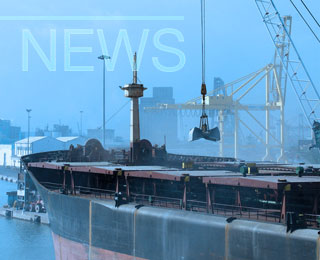In the news late-May, the OECD released a new report confirming strong expansion in world steel markets and forecasting 6% growth for both 2011 and 2012. World steel output growth slowed in the second half of 2010 but, on the back of Chinese demand, rose nearly 10% in the first quarter of 2011 QoQ. However Chinese growth is expected to fall to around 5% in 2011 and again in 2012 report analysts at shipbrokers Barry Rogliano. Overall the world economy had seen strong recovery in automotive manufacturing in both the mature and developing economies, though demand in the construction sector has yet to recover in the advanced economies.
Looking back at shipping activity in May, the month has been characterised by some steady improvements in the Cape sectors which has, in turn, given some impetus to the Dry Bulk index rising to 1489 by early June. However despite the renewed optimism for the Cape sector, the other segments have underperformed despite some earlier promise in the Panamax sectors. Similarly the super and Handy sectors remain somewhat in the doldrums.
Iron ore shipments out of India’s west coast have been a major talking point with some 25Mt of ore reportedly in storage while shippers continue to wait for export licenses despite earlier rulings by India’s Supreme Court to lift an ongoing export ban. With monsoon weather arriving earlier than traditionally than expected fears that the excessive amounts under open storage could suffer rain damage adds another element to this high volume export trade.
In late-May, the Panamax sector showed some signs of improvement thanks to a busy USG coal export trade and an active ECSA area exporting grain to the Far East. This latter trade over the last month has significantly decreased the available fleet in the Atlantic and pushed the TA round voyage up. Short period activity was quiet towards the end of May and rates firmed up by US$300, closing at US$14,500 per day by the third week in May. By early June the Panamax market was indicating the TA round at US$15,450 per day but with signs of easing.
East of Suez, the Indian market continued to ease. The coming monsoon and a quieter iron ore market pushed down the WCI/China freight to US$12.5/t from US$13/t in late-May. The Nopac route suffered the most and lost almost US$1000, hovering in the low US$13,000s per day. Regarding the period market, rates remained flat and only a few fixtures were fixed, and at around US$14,500 per day for a BPI type vessel delivery –reports Barry Rogliano.
In the smaller sizes, the main event for the Handysize is the revival of the Black Sea market which has started to export grains again. Many players were fresh open with orders mainly to the Continent or the Spanish Mediterranean. Such trips would run around US$18/19,000. Fixtures from East Coast South America to the Far East are in the low US$20,000s and around the high US$10,000s to the Med/Black Sea area. On the Eastern side, Supramaxes ex India to China were being fixed around US$13/14,000 in early June. Indonesia to India was reportedly done in the mid US$10,000s by week-ending 6th June. Published under Cement News


